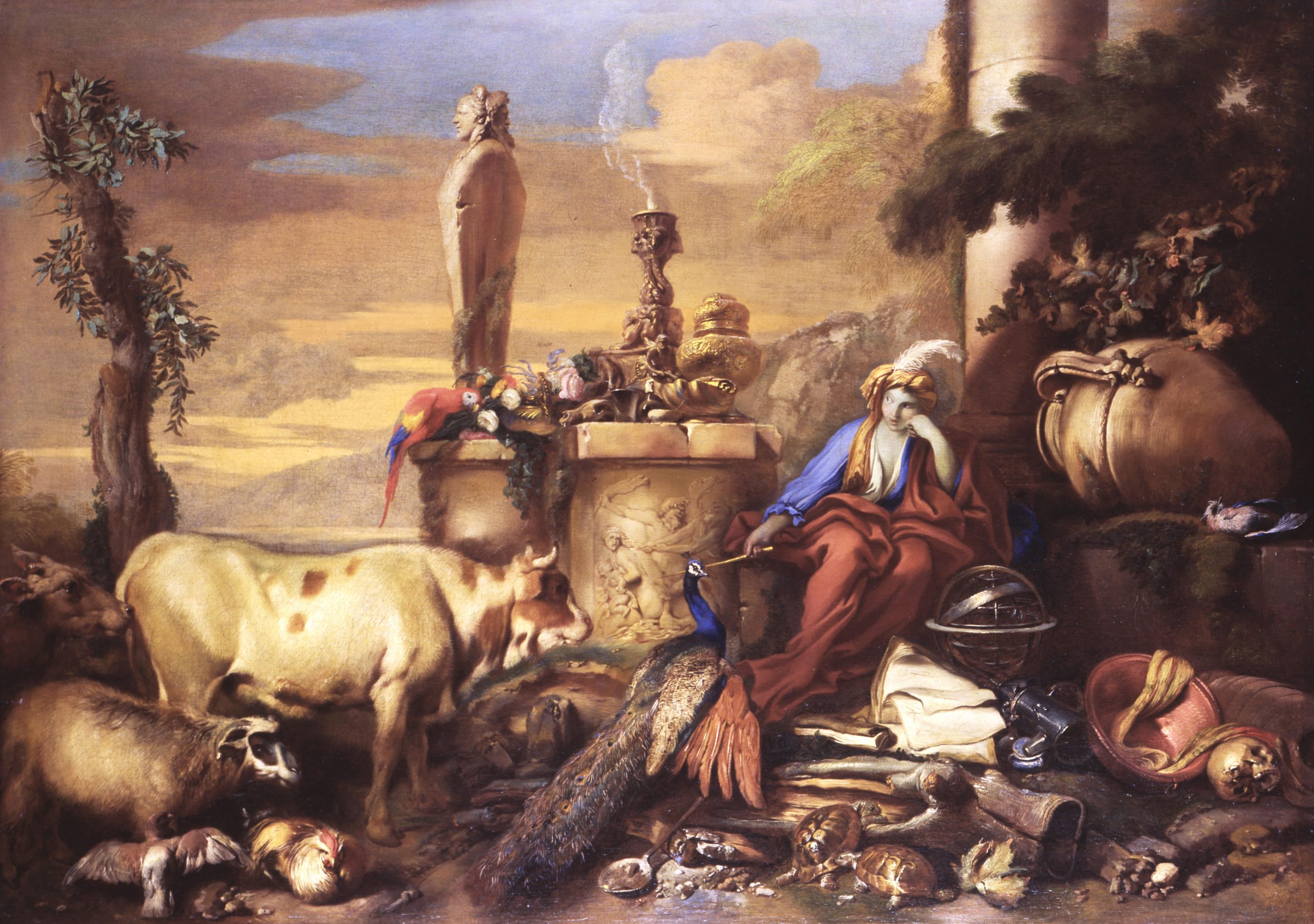
Giovanni Benedetto Castiglione, known as Il Grechetto
(Genoa 1609 – Mantua 1664)
The Sorceress Circe
1651 circa
Oil on canvas
99,2×141 cm
Museo Poldi Pezzoli, Milan

ARTWORK
In this beautiful painting, dated to about 1651, Circe sits a little aside with a thoughtful air. She holds a magic wand and is surrounded by numerous animals since, according to Greek mythology, Circe turned all those who came to her island into beasts, a fate which befalls some of Ulysses’ companions in the Odyssey.
In the centre of the scene is a pedestal decorated with bas-reliefs, on which rests a two-faced herm, a decorated vase, an elaborate torch holder emitting a small plume of smoke, and a shell-shaped vessel.
An array of objects surround the enchantress, including a few large books, an armillary sphere, a copper basin and a skull. Circe’s pose, with her head resting on her hand, the abandoned tools of knowledge, the skull, a dead bird, the hollow and rotten trunks, and the wisp of smoke recall the images of Melancholy.
The painting is by the Genoese painter Giovanni Benedetto Castiglione, also known as “Il Grechetto”, who depicted the theme of Circe several times throughout his career. This subject was ideal for developing his ability in rendering fabrics and various surfaces such as the marble of the sculptures or the plumage and coats of the animals.
BIOGRAPHY
Giovanni Benedetto Castiglione was born in Genoa in 1609. He trained with Giovan Battista Poggi, but was also highly influenced by the works of the Flemish painters Rubens and Roos present in the city. His decision to foreground animals and still life in his paintings, relegating historical scenes to the background as pure pretext, was inspired by the work of Jan Roos.
Between 1632 and 1634, he went to Rome, where he became acquainted with Gian Lorenzo Bernini and Nicolas Poussin. He began using more dazzling colours, and his paintings became enriched with acquired a new spatial dimension.
Castiglione was also a highly-regarded engraver. He specialised in etching and invented the technique of the monotype: his prints also likely influenced the work of Rembrandt.
In the 1630s and 1640s he travelled continuously between Rome, Naples and Genoa. In the 1650s, he was a painter at the Gonzaga court in Mantua, where he died in 1664.
